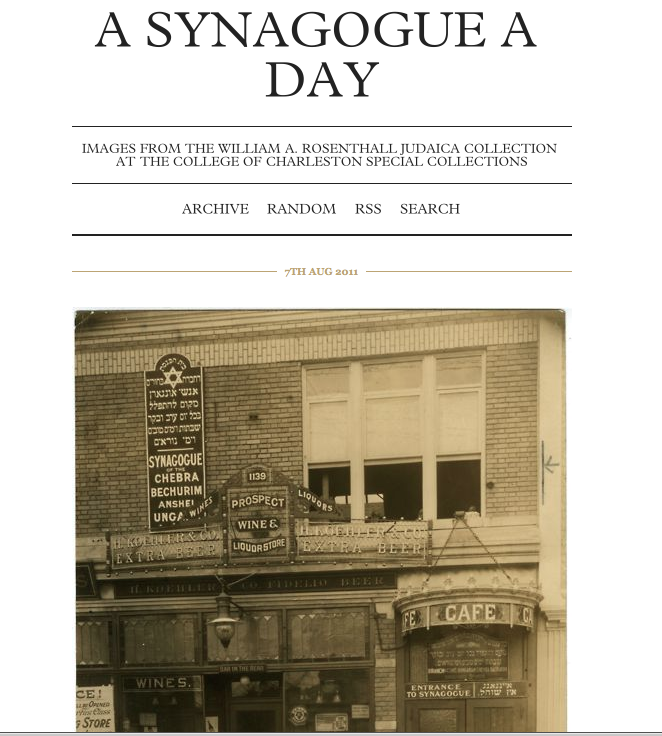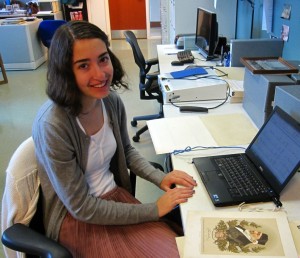While scanning a portfolio of postcards from Germany and Austria, our intern Heidi Wilson (CofC undergraduate, historic preservation program) discovered the very first item of Rabbi Rosenthall’s Judaica collection!

Rosenthall discussed his collecting in a 1997 oral history interview with Dale Rosengarten.
“WR: My collecting—aside from philately which, how shall I say, charmed me from early youth, my Grandmother Rosenthall, née Moss, had gone to Europe a few years before my birth and had, in our attic in Ohio, huge boxes of travel folders, souvenirs, and hundreds upon hundreds upon hundreds of postcards. One of the postcards, among others, intrigued me because it showed the interior of a very beautiful synagogue with round balconies in Augsburg in Germany [ed.: Mainz, Germany], which she had visited. Eventually I asked her for it and, of course, she gave it to me.
Then when my father died and the household was in disruption, we moved and it got lost. I kept trying to find it periodically and, in the meantime, started collecting other Jewish postcards. Low and behold, one year or month or day, I found it, although I had lost some boxes, incidentally, in the moves. That started the postcard area, but that was related to graphics in general.
And, let’s say by the time of my marriage, I had already started to pick up a print here, a print there, and then going to Europe and Israel immediately thereafter increased this. Then the years following, living in New York for so many years and traveling to Europe, basically, and Israel so often, it just kept accumulating. I lay it all, basically, to a double entry that would be my interest in stamps and the search for my grandmother’s postcard. So now I have more than three thousand different Jewish postcards and the print collection, I think, in private hands in the United States, is the largest Jewish interest.
…
DR: What would you say motivated your collecting?
WR: The same thing that motivated my eventual entry into the rabbinate, I guess: an interest in Jewish history and affairs. I was the only Jewish boy in my hometown and, therefore, questions of identity entered into it. There was a Jewish girl a couple of years younger that I used to run from [laughter] every time I saw her because she was kind of, shall we say, pursuing [laughter]. But that fact, that I had to represent Jewry among the young, I think, had a lot to do with it, and I was very pleased to do it.
DR: It was really more from the angle of your Jewish identity than it was from—
WR: You see I was always interested in drawing and so forth, and in painting. There were a few things around the house, not much. So from early school, from early elementary school, I was usually the class artist. When I was in high school, I edited the yearbook, but I also was the artist thereof, and was interested in general art always and did painting and drawing. I don’t do much now, although I go to the Gibbes classes every now and then. I may do something again if I feel up to it—soon.”





